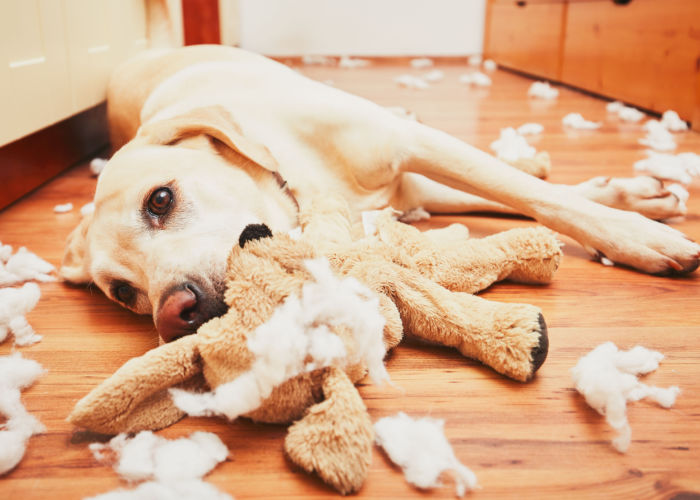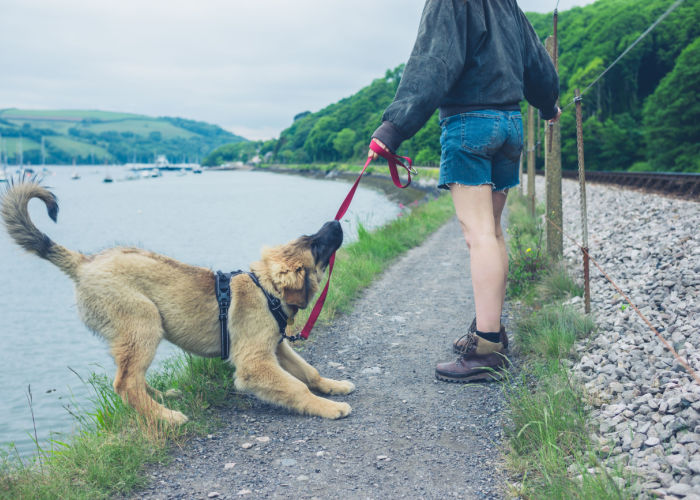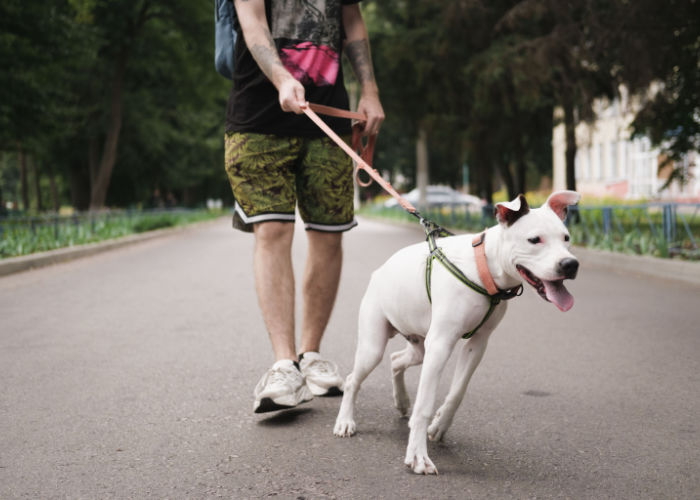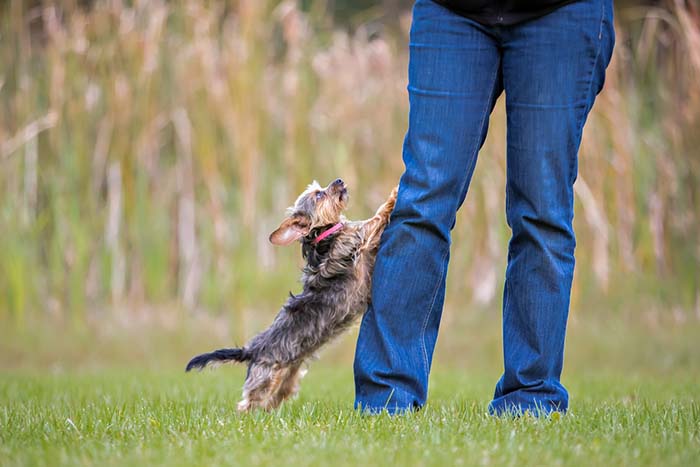Table of Contents
Is disobedience in dogs common for all pet owners? Or is my pup just the most mischievous dog in the world?
Worry not, because, in this blog, we'll tackle the causes and possible ways to control a disobedient dog.
Dealing with a disobedient dog is frustrating. As much as we love these puppies, there are times when they'll get on our nerves.
A disobedient dog can be dangerous as these dogs tend to bite, jump, excessively bark, and more. Fortunately, there is always room for improvement.
Below, we'll discuss the different reasons why your dog is disobeying your command and how you can correct them.
Now, let's get right into it!
Disobedience in Dogs
So what does it mean when a dog is disobeying you? Let us first define the word obey to know the answer to that question.
To obey is to follow a command or to comply with a command. That means when a dog is disobeying your orders, it is not by accident. They have a conscious choice to not follow your commands.
In disobedience in dogs, the dog is refusing to follow instructions even though they know what you want them to do.
When it comes to disobedience in dogs, the owner is always at fault. I know that's hard to hear, but it's the truth.
Now, why is it your fault then? Well, there are a lot of things that you do and don't notice, that are causing your dog to misbehave.

Reasons Why Your Dog Is Disobedient
Many factors can affect your dog's behavior. Below, we've compiled a short list of the things that can cause disobedience in dogs.
First, let's talk about dog training:
Lack of Training
If you're a dog owner, you know that training is crucial in raising a puppy. Lack of training can lead to some behavioral issues in the future.
If you stopped training your pup after he learned how to sit, lie down, pee or poop in the proper place, then you're doing dog training wrong.
Lack of Exercise
The lack of exercise can also be a factor when it comes to disobedience in dogs.
If an energetic dog does not get the required physical activities, it can develop behavioral problems and other health issues.
Every dog breed has a different required time for exercise per day.
Regular exercise can help them maintain good health and also be happy. Remember that a tired dog is a happy dog.
Reinforcing Bad Behavior
Pet owners might not know this, but sometimes, they are reinforcing their pup's bad behavior.
For instance, if your dog is excessively barking at you, how would you respond? Most dog owners will yell at them to stop.
Unfortunately, that's their first mistake. Why? Because they just gave their dog the attention that they wanted in the first place.
Another example would be if he stole your food.
Are you going to yell at him while you watch him eat your food? Again, you just gave him what he wanted.
That's why it's important that you first think about what your dog's main goal is when he's misbehaving before acting out.
Teenager Phase
in this case, this is not necessarily the owner's fault. But remember that how you respond can make a difference in your dog's behavior.
Just like humans, dogs also undergo the “teenage phase”. This rebellious stage is usually around when the dog is 5 months to 18 months old.
In these times, the puppy will try to test its owners to see what it can get away with.
That's why it's best to make sure that your training with them is solid and consistent to help establish boundaries.

Common Dog Disobedience Behavior Problems and How To Correct Them
Furthermore, let's dive into some of the most common behaviors that a disobedient dog exhibits.
Pullin on the Leash
First on the list is when a dog is pulling on the leash when you go for walks.
When you and your pup are out on a walk, and your dog is constantly pulling on the leash, it looks like the dog is taking you for a walk.
Dogs are generally faster than humans, and one of the main reasons that dogs tend to pull their owners on a leash is that they get impatient or get overly excited to go for walks.
They are excited to see the environment. They want to sniff everything that they find intriguing.
How to correct it
Usually, dogs are not fond of walking calmly on a leash. That's why you'll need to communicate clearly what you want them to the dog.
If you're wondering how can you rectify this behavior, you can start by rewarding them once they stay calmly by your side.
In your walks, bring his favorite treats and position them by your side where they can sniff them.
You must only reward them when they are calm.
Also, if he tries to pull the leash again, you can redirect or turn in a 180-degree motion.
Whining at the Dining Table
There are times when our pup can be a little bit demanding, especially when it comes to food.
The main problem when it comes to this behavior is that there is no strict or official rule that you can't feed the dog from the table.
There is always one family member who will be lured to their puppy eyes and give them scraps of food.
Also, there are times when visitors will come over to eat dinner at your house, and they are not aware of the rules.
If your dog gets food even once at the dining table, they'll believe that they'll be able to get some food again in the future.
How to correct it
The solution for this is very simple. It is to never feed your pup at the dining table.
Under no circumstances should you or a family member give your dog scraps of food at the table or in the kitchen.
It would be difficult for some family members to comply at first, but with strict rules and consistency, you can rectify this disobedient behavior.
As the owner, it is your job to remind your family and possible visitors about this rule.
If there are scraps that you don't want to waste, you can keep them for their next meal.
And if ever your pup keeps on whining and demanding food, redirect them to their bed or another room.
Jumping on People
Next on the list is when a dog jumps on people. This usually happens when a dog is excited, and as soon as the owner opens the door, the dog jumps right into them.
Due to their excitement, they tend to charge towers to their owner and jump on them.
Dog owners usually find this cute, and they'll reward their pet with pets and kisses.
But how can you blame them? They are just adorable and lovable, and we've missed them after a long tiring day at work or school.
Unfortunately, this can be a problem when the person entering the house is an elderly person.
It would be a disaster if you let your German Shepherd or Great Dane jump on Grandma.
Other examples would be if a person coming to the door is allergic.
Or you may have been out at a fancy dinner, and when you get home, there's a possibility that your dog can make a mess out of that dress.
How to correct it
Just like any of the solutions above, it all comes down to consistency. Rules should never be broken once enforced.
If you want to correct this behavior, you can start by rewarding your dog when doing an alternative behavior. What that means is that you don't pet your dog once you come home.
Instead, you'll reward them when they sit politely and when they wait patiently to be petted. Make sure that they are calm when you're going to reward them.
This method will take a lot of work, but the main thing is you'll need to create a routine for your pup that will help him understand that there are certain rules and limitations in the house.
Jumping on Furniture
Jumping on the couch can also be an issue for disobedient dogs. They like to jump on the sofa because they love to be part of the family.
Similarly to the ones above, if one family member lets your dog jump onto the couch, it can happen again and again.
It can also create confusion if some family members forbid your dog on the couch and others don't.
How to correct it
Every family member should be firm and strict to follow all the rules to be able to rectify these behaviors. Consistency is the key!
Discuss these rules with the family and make sure that, under any circumstances, they should not allow your dog to jump onto furniture.
If the rules are not clear, it'll make it harder for your dog to understand what you want them to do.
Another tip to correct this behavior is to put their bed in the living room so they can feel like they are part of the pack or family.

Tips on Training a Disobedient Dog
There are plenty of ways to help correct our dog's bad behaviors, and below are a few tips that you can add when it comes to training a disobedient dog.
Positive Reinforcement
Firstly, it's always great to train your dog with positive reinforcement. However, remodeling your dog's behavior will take a lot of time and work.
Remember that it'll also take a lot of failures to succeed. Be patient and trust the process.
Start the reinforcement at home and carry it to different areas where the behavioral issues arise.
For instance, it can be at the dog park or your parent's house.
Socializing
Socializing is also best done at an early stage. Take your pup to the dog park to get used to other dogs and humans.
With socializing, your pup can get used to having different companies and will be able to play with other dogs.
It can also help them feel confident and minimize stress as they mature.
Strengthening your Bond
If you and your dog have a solid bond, it is less likely for them to disobey your commands. So how can someone improve their bond with a dog?
It's simple, but at the same time, it takes a lot of work.
To strengthen your bond, you'll have to spend more time with your pup. Doing more activities like long walks, playing fetch, or just simply cuddling up.
Find the best Reward
Some dogs are picky when it comes to their food. You know your pooch more than anyone.
You'll notice if they don't seem interested in the treat that you're offering as a reward.
If that's the case, try on some new special snack instead. Try different flavors, or maybe buy some homemade dog treats around your area.
Moreover, some dogs will much prefer praise as a reward.
Choosing the best reward will require some trial and error, but I promise you that it'll be worth it in the end.
Emotions are Important
When it comes to training a dog, it's also important to keep their emotions in mind.
We all have some days where we're just off and don't want to do anything.
Monitor your pup.
If they seem a bit distracted, frightened, or overall acting weird, it would be best to call off your training for the day.
Do not force your dog. You can always try later or tomorrow.

Frequently Asked Questions About Disobedience in Dogs
Why does my dog purposely disobey?
One of the main reasons why dogs disobey their owners is that they don't understand.
That doesn't mean that they are deaf or stupid, but it can be because they don't perceive your commands.
Your rules or commands are not as precise as you may think it is.
How do dogs show signs of abuse?
A few signs that your pup has encountered abuse in the past are when they are aggressive, even when unprovoked, whining, or whimpering.
Abused dogs are usually overly submissive, too, and they avoid any kind of physical contact.
How do dogs say sorry?
Two of the most common ways a dog says sorry is when they are making puppy eyes. I mean, who can resist their adorable little eyes?
Another example is when they tuck their tail between their legs while avoiding eye contact.
Disobedience In Dogs: Summary
Disobedience in dogs can be tough to deal with—especially for first-time dog owners who only know a few things about their dog's breed or temperament.
Disobedience in dogs can be caused by multiple things.
For instance, your pup is disobeying your commands because they lack exercise, inadequate training, and involuntarily reinforce their bad behaviors, and it can be because they are in their teenage phase.
A few examples of behaviors of a disobedient dog are jumping on people or furniture, whining at the dining table demanding to be fed scraps of food, and pushing on the leash on walks.
Fortunately, it's never too late to correct these behaviors. It'll take a lot of time and work, but if you truly love your pup, you'll make the time for it.
Always remember that consistency is the key when it comes to training and be strict on your rules.













